Tasting: 7 Non-Alcoholic Craft Beers from Go Brewing
Photos via Go Brewing Drink Features craft beer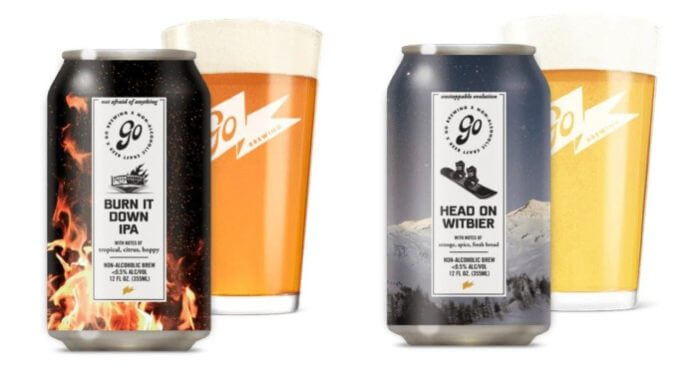
It’s funny to think back to just four or five years ago, and how radically different the landscape was for non-alcoholic beer. Back then, even when I was having an eye-opening first taste of something like Heineken 0.0, a beer that would go on to completely transform the market for NA beer as we know it, I never would have imagined that NA beer would be a regular part of my drinking habits. I also wouldn’t have imagined that entire NA craft beer breweries would exist, specializing solely in the production of government-defined non-alcoholic beers of less than .5% ABV. And yet here we are, with successful non-alc ventures such as Athletic Brewing Co. growing hand over fist, and a new wave of dynamic, experimental NA breweries popping up all over the country.
There are a few useful advantages to producing and selling NA beer, to be certain. Perhaps chief among the business advantages these breweries possess is that they can legally sell their beer online to consumers in almost every state. This can effectively open a huge national market to even tiny NA breweries, who can skirt the complexities of distribution if they can make a mail order system work for them. To some degree, these advantages are offset by additional challenges, such as the difficulty of shipping and maintaining freshness/purity in beer without alcohol. But it certainly helps that NA craft beer is just so much better now than it was even five years ago. The revolution in quality is very real, and it has resulted in finding worthy new NA beer brands on a regular basis.
And I’m pleased to report that I’ve encountered another: Go Brewing of Naperville, Illinois. Located just across the street from Chicagoland beer mainstays Solemn Oath, Go Brewing is a pretty young operation that got off the ground during the supremely challenging year that was 2020, but they’ve managed to turn out an impressive array of NA craft beer styles. I was particularly interested to try their lineup because it contained a handful of styles you just don’t see in non-alcoholic beer very often, from nitro stout (and even a “chocolate cherry stout”) to Belgian witbier. And I walked away more than impressed.
So with that said, let’s dive into this entire tasting lineup from Go Brewing.
Suspended in a Sunbeam Pilsner
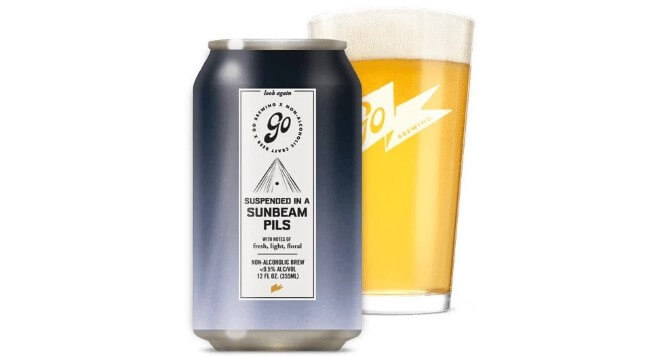
Non-alcoholic lagers are commonplace, but proper, German-style NA pilsner has always been something that is quite hard to come by. I’m not sure why this is—do noble hops not tend to work with NA beer malt bills or yeast profiles? Why haven’t I had a chance to try more NA pilsners that are heavily perfumed with Hallertauer or Saaz, like so many other modern craft pilsners?
I was more than pleased, then, to see this NA pilsner bring some of the noble hop profile I’ve been longing for. The nose is fairly mild, with light corny sweetness and muted florals. But on the palate, the noble hops come out to play in a bigger way, with bold floral tones, and bright mineral notes. Perhaps there’s a little lemon in there, and a kiss of sweetness, without any of the unpleasant, “unfermented” character I hate to see in NA beers. From top to bottom, this is overall the most accurate non-alcoholic German pilsner I’ve had to date. And considering it’s one of my favorite styles, that’s a good discovery.
Burn It Down IPA
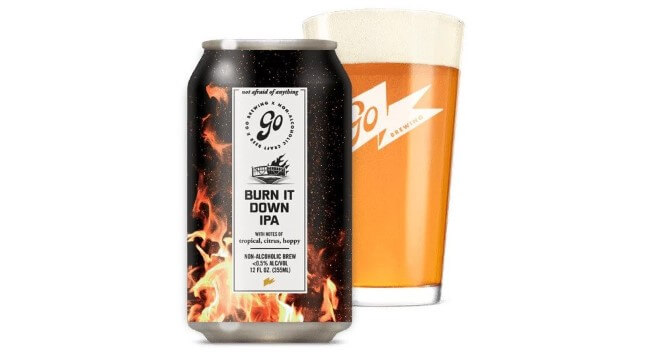
Non-alcoholic craft IPA is always a somewhat tricky proposition, and a very large percentage of the entries in this category tend to land in the “okay, but not quite there” range. That feels true to me of Go Brewing’s Burn It Down IPA, which seems to be intended as the more traditional IPA entry in the portfolio, which also has a hazy IPA as well. This one is floral, citrus-laden but slightly soapy on the nose, and it does have some of the unmistakable, wort-like maltiness to it, a flavor that seems to be particularly omnipresent in many NA IPAs.
On the palate, sweet malt syrup transitions to a bit of graham cracker, with citrus, grassiness and a notable assertive smack of hop bitterness. There’s also an astringency that dries the palate out somewhat, which isn’t something I’ve encountered in a lot of non-alcoholic IPA. The assertive level of bitterness is definitely a star player here, and this is more bitter overall that most any other NA IPA I’ve tasted. If you’re a craft beer geek who wants a fair degree of bitterness in your IPA, or are resentful of the obsession with juicier, sweeter IPA, this might be a non-alcoholic experience you’d want to seek out.
Prophets Hazy IPA
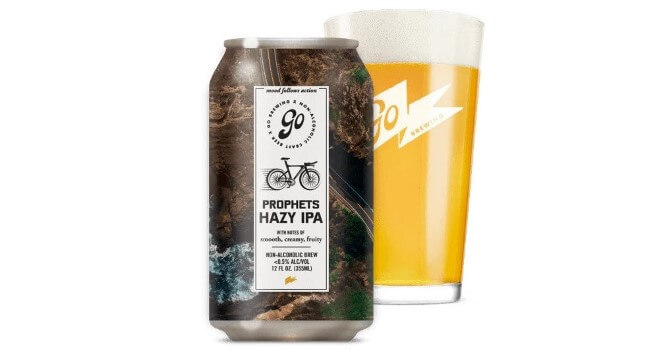
A hazy IPA option is obviously a necessity for any brewery in 2023, non-alcoholic or not, and Go Brewing has managed a pretty decent one. The nose here is heavy on overripe mango, counterweighted by notes that are quite dank and a little bit catty. On the palate those big fruit flavors are definitely there, with lots of mango and citrus, while the dankness follows behind. Overall, this one possesses a mild sweetness, and it does have a little bit of trailing bitterness, though it has nowhere the bitter backbone of the Burn it Down. Pretty much what you’d probably expect from a craft hazy IPA, not bad at all.
Street Cred Nitro Bold
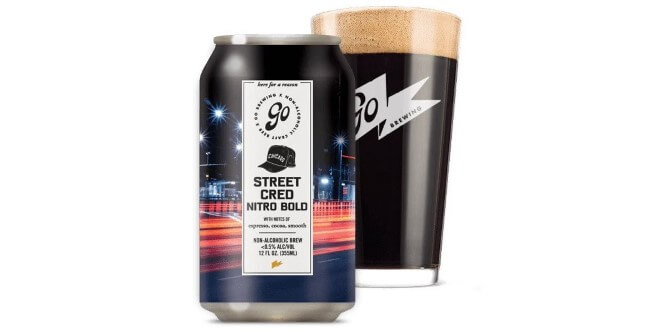
A really great, non-adjunct, non-alcoholic stout is something I’ve been hunting for years at this point. In that time, I’ve come across some that I don’t mind drinking, but I haven’t necessarily found one that evokes a great, roasty, bittersweet porter or stout, which is one of my favorite styles. This take from Go Brewing throws in the added wrinkle of nitrogen rather than carbonation—have I ever sampled a nitrogenated NA beer before? I’m honestly not sure it’s something I’ve encountered.
Regardless, this one feels like it gets a bit lost in translation. The nitrogenation seems to dissipate rapidly, leaving the beer relatively flat. A dry, roasty nose with pronounced wood char hints at a similar palate, which gives you a little smoke, a hint of chocolate and some malty graininess. That gets largely washed away by a slightly bitter and astringent char, however—like roasted nuts that progressed to burnt. All in all, it’s a little overwhelmed by the char and dryness.
Chocolate-Covered Cherry Stout
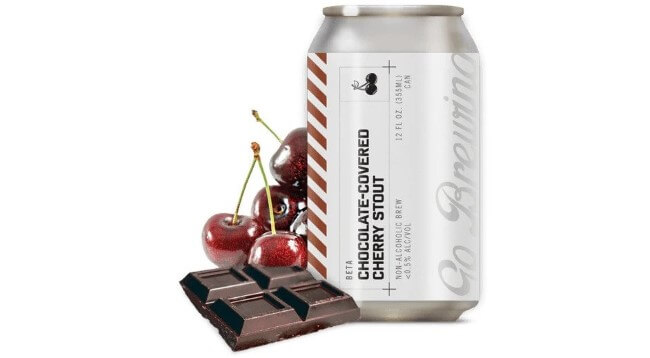
I have to admit, I did not have high hopes for this one at all. On my best day, I only really tolerate flavored stouts and the entire world of pastry stout, and I was a little trepidatious to see what a non-alcoholic version would be like. Moreover, after tasting the nitro stout, I was afraid this one might just be in the same vein, with added cherry flavor.
I was shocked to find, however, that I actually quite liked this stout, largely because it demonstrates a very impressive degree of subtlety and restraint in employing its flavors. This is clear from the moment you smell it—the cherry is just a faint wisp of jammy dark fruit on the nose, combined with nutty cocoa. On the palate, I’m getting cacao nibs, with subtle dark fruitiness and a slight tanginess, along with mellow sweetness that pairs well with the mild roast. I never would have expected to find myself preferring this one over the non-adjunct stout, and yet here we are. It’s so subtle, in fact, that I can’t help but think there are probably plenty of consumers who are disappointed that it doesn’t have more of a cherry candy flavor. However, the fact that it doesn’t is a big plus in my book.
This is an entry from the brewery’s “Beta” series, which are more experimental beers that haven’t yet been selected for potential wider production.
Head On Witbier
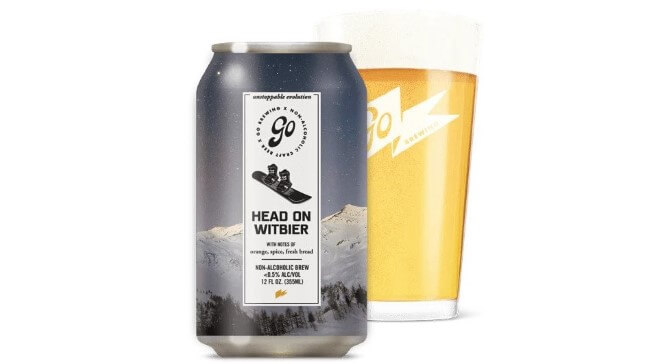
I really appreciate the fact that Go Brewing is taking on a wide variety of craft beer styles that one doesn’t typically see translated into the arcana of NA beer. Belgian beer styles in general are almost nonexistent among NA brewers, and I can guess at why some of those reasons might be—many are higher ABV to begin with, and it wouldn’t be surprising if the delicate, yeast-derived characteristics of Belgian beer didn’t survive the alcohol removal process. As a result, this might be the first NA witbier I’ve seen.
On the nose, this one is pretty mild—I’m getting faint lemon and orange, and a profile of doughy wheat or bread, with maybe just a hint of clove-like spice. On the palate, there’s some more of that lemon. It’s mildly sweet, a little grassy and herbal, with grainy flourishes. Some spice notes are there, but it doesn’t necessarily read like “witbier” to me—some aspect seems different, and I’m not reminding of the typically ubiquitous coriander. This seems more like say, an American pale wheat ale with a little citrus. All in all, doesn’t necessarily evoke Belgian witbier to me, but it’s pretty solid.
Grapefruit IPA

Another “Beta” series entry, this is yet another foray into a corner of the NA world that I haven’t seen explored much, which is fruited IPA. And after tasting this one, I’m sort of wondering why that would be, because the judicious use of grapefruit really smooths over any rough edges this one might potentially have.
Right from the can, you can see there’s something unique in this one—it’s the most hazy and opaque of the group, with a rosy orange-pink color that certainly evokes pink grapefruit. The nose is lovely, very juicy and expressive of grapefruit candy—it reminds my of halcyon craft beer days when so many of us were floored by a first whiff of Ballast Point’s Grapefruit Sculpin, and the ensuing arms race to created fruited IPAs that eventually fizzled out. This, however, is quite pleasant—it has a nice texture in particular on the palate, thicker than the other IPAs, while being moderately sweet but not ostentatious in its flavors. The grapefruit is plenty assertive, bright and slightly tart. All in all, it seems like an undeniable people pleaser. It’s the best overall fruited NA IPA—probably the best fruited NA beer, really—that I’ve had to date.
At the end of the day, it’s been a really impressive showing from Go Brewing, especially when it comes to beers such as the pilsner, chocolate cherry stout, and grapefruit IPA. It’s encouraging to participate in a craft beer scene where this kind of quality has increasingly become the norm, rather than the exception.
Jim Vorel is a Paste staff writer and resident liquor geek. You can follow him on Twitter for more drink writing.